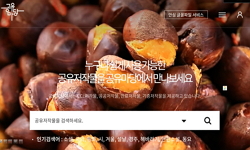This study examined cognitive characteristics that are known to cause anxiety. In previous research, interpretive biases, cognitive avoidance, and anxiety have been known to cause anxiety independently. Therefore, in this study, we aimed to explore th...
http://chineseinput.net/에서 pinyin(병음)방식으로 중국어를 변환할 수 있습니다.
변환된 중국어를 복사하여 사용하시면 됩니다.
- 中文 을 입력하시려면 zhongwen을 입력하시고 space를누르시면됩니다.
- 北京 을 입력하시려면 beijing을 입력하시고 space를 누르시면 됩니다.

모호함에 대한 해석 편향이 불안에 미치는 영향: 인지적 회피와 걱정을 매개변인으로 = The Effects of Interpretation bias for Ambiguity on Anxiety: Cognitive avoidance and Worry as Mediators
한글로보기부가정보
다국어 초록 (Multilingual Abstract)
This study examined cognitive characteristics that are known to cause anxiety. In previous research, interpretive biases, cognitive avoidance, and anxiety have been known to cause anxiety independently. Therefore, in this study, we aimed to explore the interrelationships among these cognitive characteristics, and to examine effects of interpretation bias, cognitive avoidance, and worry on anxiety level. 342 college students who completed the self-report questionnaires assessing interpretation bias(Ambiguous/Unambiguous Situations Diary-Extended Version; AUSD-EX), cognitive avoidance(Cognitive Avoidance Questionnaire; CAQ), worry(Penn State Worry Questionnaire; PSWQ) and anxiety(State-Trait Anxiety Inventory; STAI-S). The data were analyzed using SPSS 18.0 and SPSS Macro. The results suggested mediation effect of relationship between interpretation bias and anxiety was statistically significant. Additional implications and limitations were also discussed.
국문 초록 (Abstract)
본 연구는 불안을 유발한다고 알려진 인지적 특성들에 대해 살펴보았다. 기존 선행 연구에서 인지적 특성으로 해석 편향, 인지적 회피, 걱정이 독립적으로 불안을 유발한다고 알려졌다. 이...
본 연구는 불안을 유발한다고 알려진 인지적 특성들에 대해 살펴보았다. 기존 선행 연구에서 인지적 특성으로 해석 편향, 인지적 회피, 걱정이 독립적으로 불안을 유발한다고 알려졌다. 이에, 본 연구에서는 해석 편향, 인지적 회피, 걱정, 불안 간의 상호 관련성에 대하여 밝히고, 해석 편향, 인지적 회피, 걱정과 같은 인지적 특성들이 불안에 미치는 영향에 대하여 탐색하였다. 이를 위해 여대생 342명을 연구 대상으로 모호한 상황에 대한 해석 편향(Ambiguous/Unambiguous Situations Diary-Extended Version; AUSD-EX), 인지적 회피(Cognitive Avoidance Questionnaire; CAQ), 걱정(Penn State Worry Questionnaire; PSWQ), 불안(State-Trait Anxiety Inventory; STAI-S)에 대한 질문지를 응답하도록 하였다. 이러한 자료는 SPSS 18.0과 SPSS Macro를 사용하여 분석되었다. 연구 결과, 모호한 상황에 대한 해석 편향과 불안의 관계에서 인지적 회피와 걱정의 매개효과가 유의하였다. 마지막으로 이를 토대로 본 연구의 의의와 제한점에 대하여 논의하였다.
참고문헌 (Reference)
1 송수정, "한국판 인지적 회피 질문지의 타당화 연구" 한국임상심리학회 28 (28): 515-531, 2009
2 조맹제, "한국 주요정신장애의 유병률 및 관련요인:2006 전국정신질환역학조사" 대한신경정신의학회 48 (48): 143-152, 2009
3 남지수, "완벽주의 성향이 불안 수준에 미치는 영향: 모호함에 대한 해석편향과 인지적 회피를 매개변인으로" 한국여성심리학회 22 (22): 623-641, 2017
4 구훈정, "사회불안장애의 주의개입, 탈개입 및 회피과정: 자극 위협가의 차별적 효과" 한국임상심리학회 34 (34): 707-746, 2015
5 G. C. Davey, "social problem-solving abilities, and social problem-solving confidence" 32 (32): 327-330, 1994
6 T. D. Borkovec, "Worry: A potentially valuable concept" 23 (23): 481-482, 1985
7 T. D. Borkovec, "Worry: A cognitive phenomenon intimately linked to affective, physiological, and interpersonal behavioral processes" 22 (22): 561-576, 1998
8 C. Ottaviani, "Worry as an adaptive avoidance strategy in healthy controls but not in pathological worriers" 93 (93): 349-355, 2014
9 F. Tallis, "Worry and obsessional symptoms: A correlational analysis" 30 (30): 103-105, 1992
10 N. J. Sibrava, "Worry and its psychological disorders: Theory, assessment and treatment" 239-256, 2006
1 송수정, "한국판 인지적 회피 질문지의 타당화 연구" 한국임상심리학회 28 (28): 515-531, 2009
2 조맹제, "한국 주요정신장애의 유병률 및 관련요인:2006 전국정신질환역학조사" 대한신경정신의학회 48 (48): 143-152, 2009
3 남지수, "완벽주의 성향이 불안 수준에 미치는 영향: 모호함에 대한 해석편향과 인지적 회피를 매개변인으로" 한국여성심리학회 22 (22): 623-641, 2017
4 구훈정, "사회불안장애의 주의개입, 탈개입 및 회피과정: 자극 위협가의 차별적 효과" 한국임상심리학회 34 (34): 707-746, 2015
5 G. C. Davey, "social problem-solving abilities, and social problem-solving confidence" 32 (32): 327-330, 1994
6 T. D. Borkovec, "Worry: A potentially valuable concept" 23 (23): 481-482, 1985
7 T. D. Borkovec, "Worry: A cognitive phenomenon intimately linked to affective, physiological, and interpersonal behavioral processes" 22 (22): 561-576, 1998
8 C. Ottaviani, "Worry as an adaptive avoidance strategy in healthy controls but not in pathological worriers" 93 (93): 349-355, 2014
9 F. Tallis, "Worry and obsessional symptoms: A correlational analysis" 30 (30): 103-105, 1992
10 N. J. Sibrava, "Worry and its psychological disorders: Theory, assessment and treatment" 239-256, 2006
11 N. Koerner, "Worry and its psychological disorders: Theory, assessment and treatment" 201-216, 2006
12 K. Gana, "Worry and anxiety: is there a causal relationship?" 34 (34): 221-229, 2001
13 A. Mathews, "Why worry? The cognitive function of anxiety" 28 (28): 455-468, 1990
14 N. Laugesen, "Understanding adolescent worry: The application of a cognitive model" 31 (31): 55-64, 2003
15 E. B. Foa, "The validation of a new obsessive–compulsive disorder scale: The Obsessive–Compulsive Inventory" 10 (10): 206-, 1998
16 P. J. Curran, "The robustness of test statistics to nonnormality and specification error in confirmatory factor analysis" 1 (1): 16-, 1996
17 T. D. Borkovec, "The nature of worry in generalized anxiety disorder: A predominance of thought activity" 28 (28): 153-158, 1990
18 T. D. Borkovec, "The nature of normal and pathological worry"
19 C. Andreescu, "The many faces of anxiety-neurobiological correlates of anxiety phenotypes" 234 (234): 96-105, 2015
20 S. Hayes, "The effects of modifying interpretation bias on worry in generalized anxiety disorder" 48 (48): 171-178, 2010
21 K. A. Sexton, "The cognitive avoidance questionnaire:validation of the English translation" 22 (22): 355-370, 2008
22 K. A. Sexton, "The cognitive avoidance questionnaire:validation of the English translation" 22 (22): 355-370, 2008
23 A. F. Hayes, "The analysis of mechanisms and their contingencies: PROCESS versus structural equation modeling" 25 (25): 76-81, 2017
24 S. H. Kim, "The Relationship of Fear of Negative and Positive Evaluation, Intolerance of Uncertainty, and Social Anxiety" The Graduate School of Ewha Womans University 2010
25 D. W. Han, "Standardization of Spielberger State-Trait Anxiety Inventory" 1993 (1993): 505-512, 1993
26 L. Stopa, "Social phobia and interpretation of social events" 38 (38): 273-283, 2000
27 E. Rassin, "Paradoxical and less paradoxical effects of thought suppression: A critical review" 20 (20): 973-995, 2000
28 A. F. Hayes, "PROCESS: A versatile computational tool for observed variable mediation, moderation, and conditional process modeling"
29 D. B. Gold, "Origins of ruminative thought:Trauma, incompleteness, nondisclosure, and suppression" 25 (25): 1245-1261, 1995
30 N. Daviu, "Neurobiological links between stress and anxiety" 2019
31 S. Herrera, "Memory bias for threatening information related to anxiety: an updated meta-analytic review" 29 (29): 832-854, 2017
32 R. J. McNally, "Is panic disorder linked to cognitive avoidance of threatening information?" 13 (13): 335-348, 1999
33 J. W. Kim, "Intolerance of Uncertainty and Problem Orientation in Worry" 1998 (1998): 83-92, 1998
34 A. Mathews, "Interpretation of homophones related to threat in anxiety states" 98 (98): 31-, 1989
35 P. Waite, "Interpretation of ambiguity: Differences between children and adolescents with and without an anxiety disorder" 188 : 194-201, 2015
36 F. Meeten, "Goal directed worry rules are associated with distinct patterns of amygdala functional connectivity and vagal modulation during perseverative cognition" 10 : 553-, 2016
37 T. D. Borkovec, "Generalized anxiety disorder: Advances in research and practice" 2004
38 M. Robichaud, "Gender differences in worry and associated cognitive-behavioral variables" 17 (17): 501-516, 2003
39 E. B. Foa, "Emotional processing of fear: exposure to corrective information" 99 (99): 20-, 1986
40 R. Misra, "College students' academic stress and its relation to their anxiety, time management, and leisure satisfaction" 16 : 41-, 2000
41 A. Mathews, "Cognitive vulnerability to emotional disorders" 1 : 167-195, 2005
42 M. W. Eysenck, "Cognitive functioning and anxiety" 49 (49): 189-195, 1987
43 J. Y. Lau, "Cognitive bias modification of interpretations: A viable treatment for child and adolescent anxiety?" 51 (51): 614-622, 2013
44 C. Krahé, "Cognitive bias modification for interpretation with and without prior repetitive negative thinking to reduce worry and rumination in generalised anxiety disorder and depression: protocol for a multisession experimental study with an active control condition" 6 (6): e013404-, 2016
45 M. W. Eysenck, "Bias in interpretation of ambiguous sentences related to threat in anxiety" 100 (100): 144-, 1991
46 J. F. Thayer, "Autonomic characteristics of generalized anxiety disorder and worry" 39 (39): 255-266, 1996
47 K. J. Preacher, "Asymptotic and resampling strategies for assessing and comparing indirect effects in multiple mediator models" 40 (40): 879-891, 2008
48 A. T. Beck, "Anxiety disorders and phobias: A cognitive approach" Basic 1985
49 D. H. Barlow, "Anxiety and its disorders: The nature and treatment of anxiety and panic" Guilford Press 1988
50 K. Mogg, "Anxiety and attention to threat: Cognitive mechanisms and treatment with attention bias modification" 87 : 76-108, 2016
51 K. A. Sexton, "An investigation of factors associated with cognitive avoidance in worry" 33 (33): 150-162, 2009
52 N. Koerner, "An investigation of appraisals in individuals vulnerable to excessive worry: The role of intolerance of uncertainty" 32 (32): 619-638, 2008
53 A. T. Beck, "An information processing model of anxiety:Automatic and strategic processes" 35 (35): 49-58, 1997
54 M. W. Vasey, "Advances in clinical child psychology" 1993
55 D. E. Schoth, "A systematic review of experimental paradigms for exploring biased interpretation of ambiguous information with emotional andneutral associations" 8 : 2017
56 Y. Takagi, "A common neural network among state, trait, and pathological anxiety from whole-brain functional connectivity" 172 : 506-516, 2018
57 D. M. Clark, "A cognitive model of social phobia" 41 (41): 00022-00023, 1995
동일학술지(권/호) 다른 논문
-
문학치료와 외상 후 성장 과정에 관한 연구 - 2·18 대구지하철화재 유가족의 내러티브를 중심으로
- 사단법인 인문사회과학기술융합학회
- 정성옥
- 2019
- KCI등재
-
브랜드 자아일치성이 애착효과에 미치는 영향: 문화예술향유를 중심으로
- 사단법인 인문사회과학기술융합학회
- 소은혜
- 2019
- KCI등재
-
사회복지사의 소진과 이직의도 간의 관계에서 영성의 조절효과 연구
- 사단법인 인문사회과학기술융합학회
- 김정현
- 2019
- KCI등재
-
독거노인생활관리사가 지각하는 사회적 지지가 삶의 질에 미치는 영향
- 사단법인 인문사회과학기술융합학회
- 이대주
- 2019
- KCI등재
분석정보
인용정보 인용지수 설명보기
학술지 이력
| 연월일 | 이력구분 | 이력상세 | 등재구분 |
|---|---|---|---|
| 2020 | 평가예정 | 신규평가 신청대상 (신규평가) | |
| 2019-12-01 | 평가 | 등재 탈락 (기타) | |
| 2019-01-01 | 평가 | 등재학술지 유지 (계속평가) |  |
| 2016-01-01 | 평가 | 등재학술지 선정 (계속평가) |  |
| 2014-01-01 | 평가 | 등재후보학술지 선정 (신규평가) |  |
학술지 인용정보
| 기준연도 | WOS-KCI 통합IF(2년) | KCIF(2년) | KCIF(3년) |
|---|---|---|---|
| 2016 | 0.33 | 0.33 | 0.32 |
| KCIF(4년) | KCIF(5년) | 중심성지수(3년) | 즉시성지수 |
| 0.33 | 0.32 | 0.407 | 0.14 |




 KCI
KCI 스콜라
스콜라






